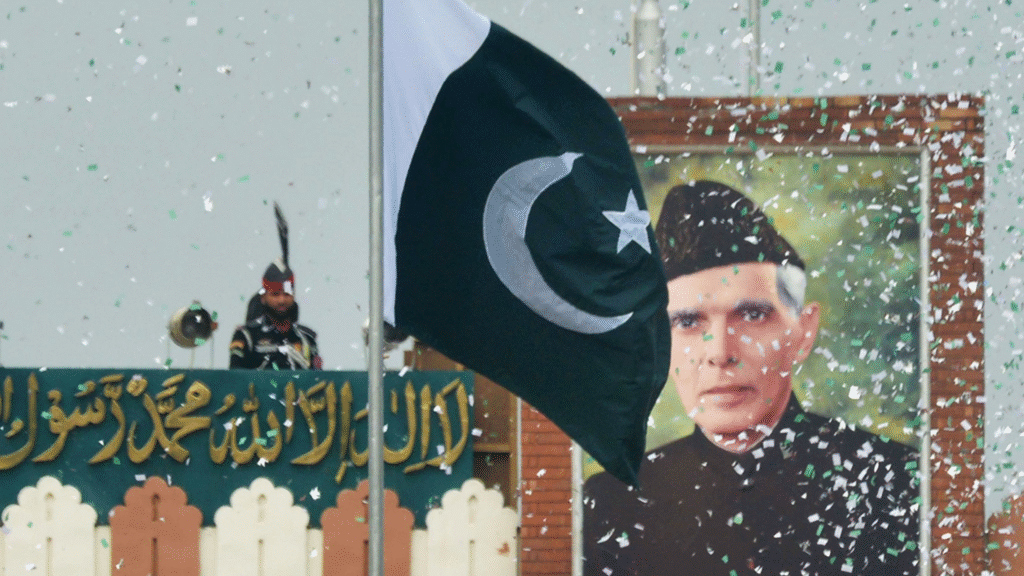
Quaid-e-Azam Muhammad Ali Jinnah: Struggle for Pakistan’s Freedom, Life History, and How He Made a Separate Nation
Quaid-e-Azam Muhammad Ali Jinnah, the founder of Pakistan, remains one of the most influential leaders in modern history. His vision, determination, and political strategies turned the dream of a separate homeland for Muslims of the Indian subcontinent into reality. In this article, we cover Jinnah’s early life, his struggle for freedom, the creation of Pakistan, and why his leadership was so unique. This article is SEO-optimized with a focus on ranking high on Google.
Who Was Quaid-e-Azam Muhammad Ali Jinnah?
Muhammad Ali Jinnah (1876–1948), popularly known as Quaid-e-Azam (Great Leader), was a lawyer, politician, and the founder of Pakistan. He led the All-India Muslim League and became the driving force behind the Pakistan Movement.

Early Life of Jinnah
- Birth: 25 December 1876 in Karachi, British India.
- Education: Jinnah went to London to study law at Lincoln’s Inn and became one of the youngest Indians to be called to the Bar.
- Personality: Known for his sharp intellect, eloquence, and commitment to justice.
After returning to India, he started practicing law in Bombay (Mumbai) and gained fame as one of the top lawyers of his time.
Jinnah’s Political Career
Early Politics (1896–1913)
Initially, Jinnah was a supporter of Hindu-Muslim unity and worked with the Indian National Congress. He believed in a united India where Muslims and Hindus could live together peacefully.
Shift to Muslim League (1913–1930s)
Jinnah joined the All-India Muslim League in 1913 and started focusing on safeguarding the rights of Muslims. He realized that Congress leadership often ignored Muslim concerns.

Why Jinnah Fought for a Separate Nation
By the 1930s, the situation had changed:
- Hindu domination in politics threatened the identity of Muslims.
- Muslims feared losing their culture, language, and religious freedom.
- Jinnah concluded that Muslims needed a separate homeland.
This led to the famous Two-Nation Theory: Muslims and Hindus are two distinct nations with different religions, cultures, and values.

Struggle for Pakistan’s Freedom
Key Events:
- 1930 – Allahabad Address: Allama Iqbal envisioned a separate Muslim state.
- 1935 – Government of India Act: Limited reforms but failed to satisfy Muslims.
- 1940 – Lahore Resolution: Passed on 23rd March 1940, demanding independent Muslim states. This is also known as the Pakistan Resolution.
- 1946 Elections: The Muslim League won almost all seats reserved for Muslims, showing the demand for Pakistan was overwhelming.
- 14 August 1947: After years of negotiations, Pakistan was created.
Jinnah became Pakistan’s first governor-general and delivered his famous speech on 11 August 1947, outlining the vision of a democratic state.
How Jinnah Created a Separate Nation
Political Leadership: Jinnah united Muslims under one banner, the Muslim League.
Diplomacy: He negotiated with British authorities and Congress leaders to protect Muslim interests.
Public Support: He gained the trust of millions of Muslims who saw him as their true leader.
Clarity of Vision: Jinnah’s demand for Pakistan was clear and non-negotiable.
Key Qualities of Jinnah
- Integrity and honesty
- Brilliant legal mind
- Confidence and determination
- Fearless orator
- Commitment to Muslim rights
Pros of Jinnah’s Leadership
| Strengths | Impact |
|---|---|
| Strong Leadership | Guided the Pakistan Movement |
| Visionary Thinking | Clear idea of a separate homeland |
| Diplomatic Skills | Handled British and Congress negotiations |
| Public Trust | United millions under one cause |
Impact of Pakistan’s Creation
- For Muslims: Pakistan provided a separate homeland where Muslims could practice their religion freely.
- For the Region: The creation of Pakistan changed the political map of South Asia.
- Legacy: Jinnah is regarded as the Father of the Nation.
Conclusion
Quaid-e-Azam Muhammad Ali Jinnah’s struggle for Pakistan’s freedom is one of the most remarkable movements in world history. From a brilliant lawyer to a visionary leader, his journey was fueled by determination and a clear goal: to provide Muslims of the subcontinent with a separate homeland.
Today, Pakistan stands as a testament to his leadership and vision.
Key SEO Keywords:
- Quaid-e-Azam Muhammad Ali Jinnah
- Struggle for Pakistan’s Freedom
- Life history of Jinnah
- How Pakistan was created
- Pakistan Movement
- Lahore Resolution
- Two-Nation Theory
- Founder of Pakistan
FAQs About Quaid-e-Azam Muhammad Ali Jinnah
1. Why is Jinnah called Quaid-e-Azam? Because of his great leadership during the Pakistan Movement.
2. When was Pakistan created? Pakistan was created on 14 August 1947.
3. What was Jinnah’s vision for Pakistan? He envisioned a democratic, secular state where every citizen had equal rights regardless of religion.
4. What was the Lahore Resolution? The 1940 resolution that demanded a separate homeland for Muslims, later becoming Pakistan.
5. How did Jinnah die? He passed away on 11 September 1948, just a year after Pakistan was created.








